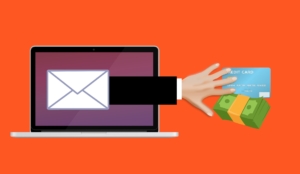What the Equifax Data Breach Can Teach Us About Security Fatigue
If you buy anything, anywhere, you are at risk of a cyber threat. Though you probably know that cyber threats exist, if you are like most of us, you don’t’ know what to do when it comes to being safe online, and if you become a victim, you really don’t know what to do. This is all important as we prepare for the next big breach like the one that happened with Equifax. If you use credit, you are a potential victim here.
 According to Equifax, more than 147 million people were affected by the breach, and most of us had or have no idea what we can do about it, or how it might affect us in the future. On top of this, when we look at statistics, we can see that almost 27 billion…not million, but billion…additional records were exposed due to data breaches in 2020, and things are only going to get worse.
According to Equifax, more than 147 million people were affected by the breach, and most of us had or have no idea what we can do about it, or how it might affect us in the future. On top of this, when we look at statistics, we can see that almost 27 billion…not million, but billion…additional records were exposed due to data breaches in 2020, and things are only going to get worse.
The issue is that people are frustrated, scared, and confused, and because these cyber-attacks are so common now, people are just getting apathetic about it. Of course, this is very dangerous. Additionally, there are other issues, too, specifically “security fatigue.”
What does this mean? It means that people just want nothing to do with worrying about computer security at all, and they get annoyed when they hear all of the rhetoric that comes from security experts like “keep an eye out for blah, blah, blah.”
Cyber Attacks are More Common Now Than Ever in the Past
It should be no surprise that cyber attacks are more common today than they were in the past. That also means that the chances of becoming a victim of identity theft are higher. Internet fraud is playing a big role in this, but it’s not just human error and bad passwords that are causing this. Instead, it’s the lack of people doing anything to stop it. And here’s the thing…if you think it can’t happen to you, you are wrong.
Tips for Protecting Yourself Online
It is not difficult to protect yourself online. Here are seven tips to keep yourself safe:
- Download a program for your browser that tells you if a site you are going to go to is dangerous. These can be seen right from your browser, and if a site is safe, you will immediately know. A full suite of antivirus should include a browser plug-in to serve this purpose.
- Keep your passwords safe with a password manager. It is very important to use a different password for every account.
- Get some type of ID theft coverage through your employer, your bank, or other business. It’s not easy to 100% fully protect your identity, but using something like this can make things much, much easier.
- Set up two-factor authentication and text alerts for sensitive accounts like bank accounts, email, and social media.
- Freeze your credit. This way, a scammer can’t open any new accounts in your name.
- Learn more about common internet scams. You should understand what ransomware is, phishing, scareware, and more.
One of the biggest things you should take away from this is to understand that if you become a victim of something like this, it doesn’t just affect you; it also can affect your family, friends, co-workers, and more. Yes, it might be annoying to some to have to take these steps, but it could be the difference between staying safe and becoming a victim.
Written by Robert Siciliano, CEO of Credit Parent, Head of Training & Security Awareness Expert at Protect Now, #1 Best Selling Amazon author, Media Personality & Architect of CSI Protection Certification.


 However, there is also the possibility that someone could pose as you and get your Informed Delivery. This means that they could get your mail before you do.
However, there is also the possibility that someone could pose as you and get your Informed Delivery. This means that they could get your mail before you do. Check Your Passwords – Every online account you have should have a different password. Never use the same password for more than one account. You can easily fix this issue by using a password manager. Also, don’t use specific words/phrases or keyboard sequences when creating passwords. A password manager can even generate passwords for you.
Check Your Passwords – Every online account you have should have a different password. Never use the same password for more than one account. You can easily fix this issue by using a password manager. Also, don’t use specific words/phrases or keyboard sequences when creating passwords. A password manager can even generate passwords for you.























